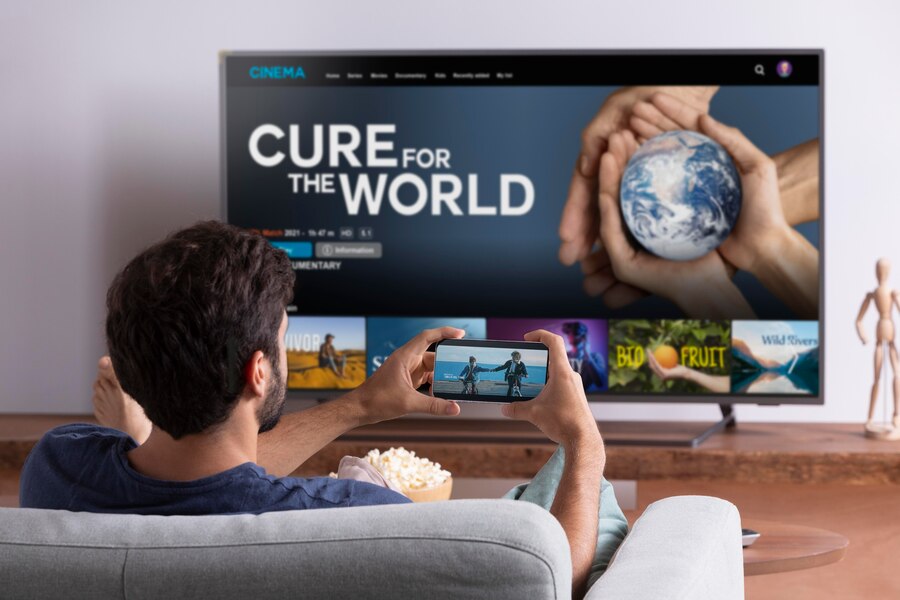
The landscape of broadcasting has experienced a notable transformation in recent years, with Internet Protocol Television emerging as a forefront platform for contemporary media consumption. This technology provides a versatile and flexible way to experience a wide array of broadcasts, sidestepping the restrictions of old-fashioned broadcasting methods. Instead of depending on cable or satellite setups, this platform transmits content via the internet, allowing users to access live television, video on demand, and movies straight to their screens. This change has not only increased the range of media available to audiences but also ushered in new levels of ease and individualization.
One of the key benefits of this technology is its power to cater to the varied tastes of users worldwide. Unlike conventional broadcast services that typically offer a narrow selection of channels, this platform systems commonly provide an extensive lineup of TV stations from internationally. This means users can enjoy worldwide news, sports coverage, leisure programming, and cultural content that might otherwise be unavailable in their area. For expats and international audiences, IPTV is a crucial link to their homelands, giving them the chance to remain connected with native programming, wherever they reside.
These services are also famous for their versatility and intuitive design. Consumers can commonly customize their channel bundles, picking only the shows that they prefer, rather than being forced into a rigid bundle of broadcasts. This pick-and-choose model guarantees that users are buying exactly what they want to watch, and nothing more. Additionally, the capability to access content as needed ensures that users are no longer limited to the programming times of standard broadcasts; they can view what they want, when they wish, if it's getting up to date on missed episodes or binge-watching an entire series.
Another noteworthy feature of this system is the high quality of content that it provides. With improvements in internet connectivity and technology, these services can stream HD quality and even ultra-HD content, providing a entertainment experience that rivals, if not outdoes, traditional television. This ultra-clear streaming capability boosts the entire experience, particularly for athletics enthusiasts and film buffs who crave clear, detailed visuals and engaging audio. Furthermore, IPTV services frequently offer advanced features like DVR capabilities, letting viewers to pause, reverse, and capture live broadcasts, bringing an extra level of convenience to their TV watching.
The connection of IPTV with different gadgets is another reason boosting its growing popularity. In contrast to standard broadcasts, which is typically limited to a single screen in a set location, IPTV can be used on a wide range of screens, including smart TVs, mobile phones, portable screens, and computers. This device flexibility ensures that viewers can watch their favorite content while mobile, whether they are at home, commuting, or on a trip. The mobility of IPTV services is especially advantageous in today’s busy world, where ease and ease of use are key.
In addition to live programming and request-based media, many systems deliver a range of engagement options that boost viewer participation. For example, some systems include social networking features, letting audiences to share their preferred content and engage with other viewers in real life. Others provide custom picks according to viewing habits, making it easier for viewers to find new content that aligns with their interests. These interactive features not only enhance the user experience but also build a connectedness among users, building greater commitment to the system.
As the popularity Annual IPTV subscription of this technology continues to increase, the market is experiencing rapid progress and increase. New platforms are joining the market, each offering unique tools and media lineups to draw viewers. This competition is pushing advances in service quality, pricing models, and customer support, favoring customers who have greater choices to select. Furthermore, developments in tech are likely to further improve the user experience, with possibilities such as virtual reality (VR) integration, artificial intelligence recommendations, and even more immersive viewing experiences on the future.
However, the emergence of IPTV has also introduced issues, particularly in terms of regulatory and legalities. As these platforms often deliver programming from various countries, they must deal with a complex set of regulations and media licenses. Guaranteeing that content is legally obtained and distributed is essential for the sustainability of the sector. Moreover, the easy access to a wide range of content poses issues about unauthorized access and pirate services, which can hurt the value of authorized systems. Addressing these challenges is critical to keeping the integrity and long-term success of this system as a mainstream entertainment platform.
In spite of these obstacles, the prospects of IPTV looks promising. As more viewers explore substitutes to traditional cable and satellite TV, this platform is well-placed to fulfill the need for versatile, premium quality, and broad entertainment options. The ability to customize programming to viewer likes, coupled with the accessibility of request-based viewing and multi-device access, makes IPTV an attractive selection for contemporary users. Whether it’s staying connected to international channels, enjoying a broader array of shows, or simply gaining more choice over what and when they watch, this technology offers a compelling solution for today’s entertainment needs.
In conclusion, this technology represents a significant shift in the way we watch TV and media. It provides a level of choice, accessibility, and excellence that is unequaled by traditional broadcasting methods. As technology continues to progress and the desire for tailored content grows, this platform is likely to become an increasingly crucial part of the worldwide entertainment industry. For users seeking a more personalized and convenient television experience, this system provides a powerful option that fulfills its claims of variety, adaptability, and high-quality content.